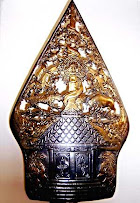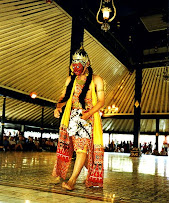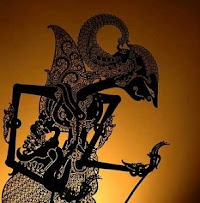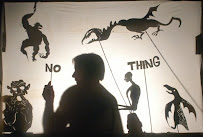Knockers and Rattles

The Two knockers, or chempala, are usually made of teak wood, more or less hammer-shaped. The larger one is about 20 centimeters long with a head 5 centimeter across, while the smaller chempala is about half the size. These instruments are used to knock the wooden chest either for sound effects, or else to give the dalang’s coded signal to the musicians. The larger chempala is held in the dalang’s left hand and is knocked against the inside of the chest. The smaller one is used when both hands are busy with the puppets, when it is held between the big toe and the second toe of the dalang’s right foot and is knocked against the outside of the chest. Since the dalang sits cross-legged with his right foot on his left thigh, his right foot is close to the wooden chest.
The rattles, or kepyak, are usually made of three small bronze plates measuring about 15 by 10 centimeters, which are strung together above one another so that they overlap loosely; they are attached to the side of the wooden chest during a performance. The kepyak are struck either with the toes of the dalang’s right foot, or else with the small knocker, and the plates then clatter against one another.
The knocking and rattling noises produced by these instruments, punctuating events or accentuating the action of a performance, are a characteristic of Wayang Purwa shows, and pierce the night for considerable distance.
The rattles, or kepyak, are usually made of three small bronze plates measuring about 15 by 10 centimeters, which are strung together above one another so that they overlap loosely; they are attached to the side of the wooden chest during a performance. The kepyak are struck either with the toes of the dalang’s right foot, or else with the small knocker, and the plates then clatter against one another.
The knocking and rattling noises produced by these instruments, punctuating events or accentuating the action of a performance, are a characteristic of Wayang Purwa shows, and pierce the night for considerable distance.


























0 komentar:
Posting Komentar